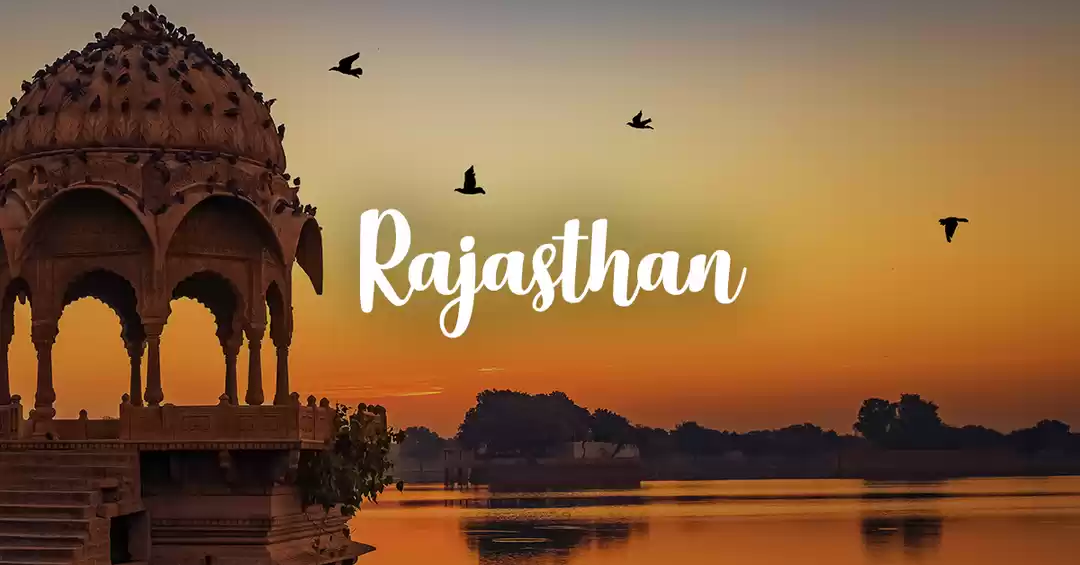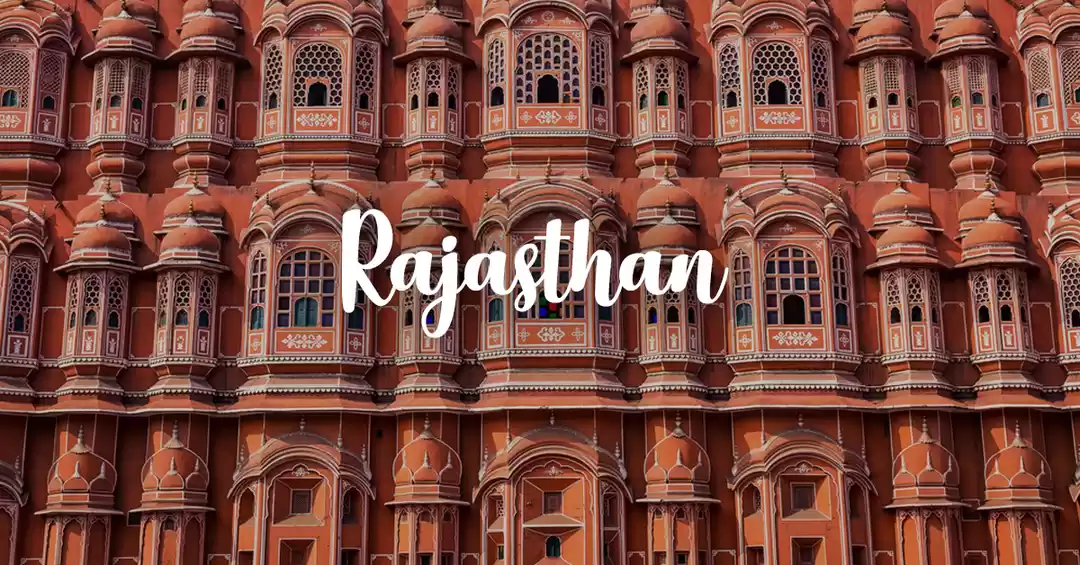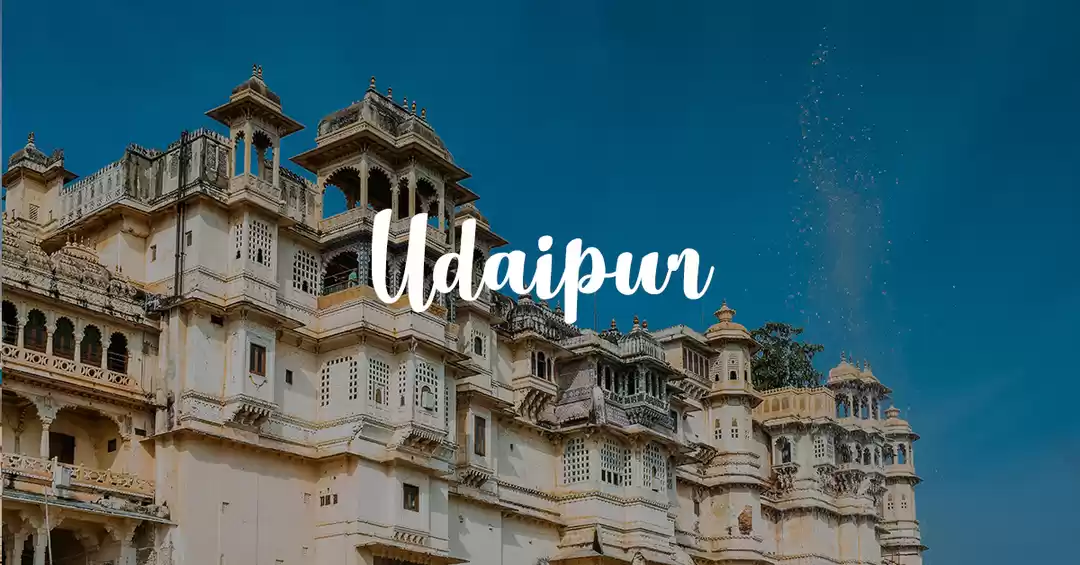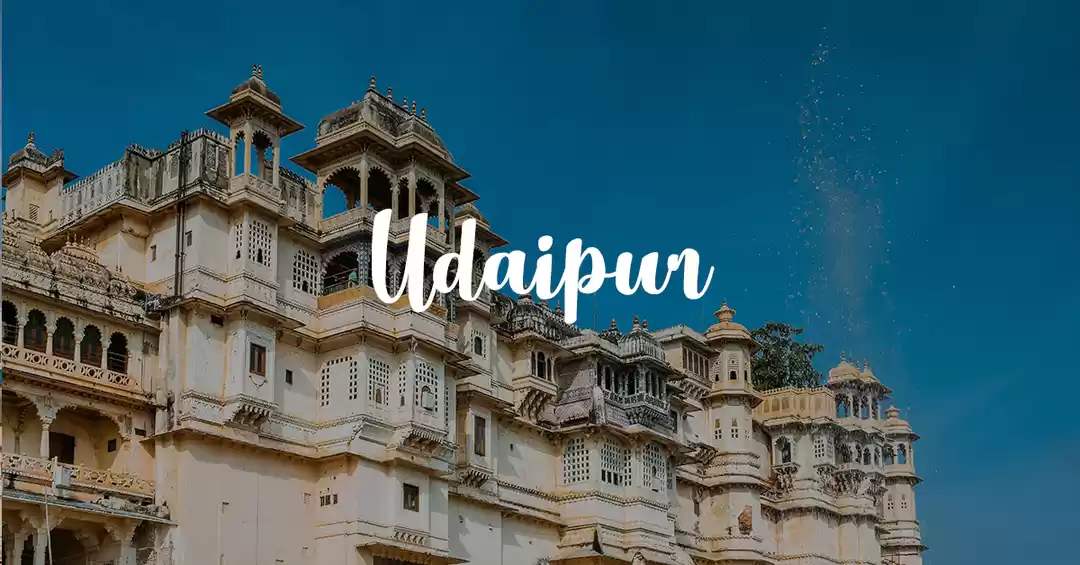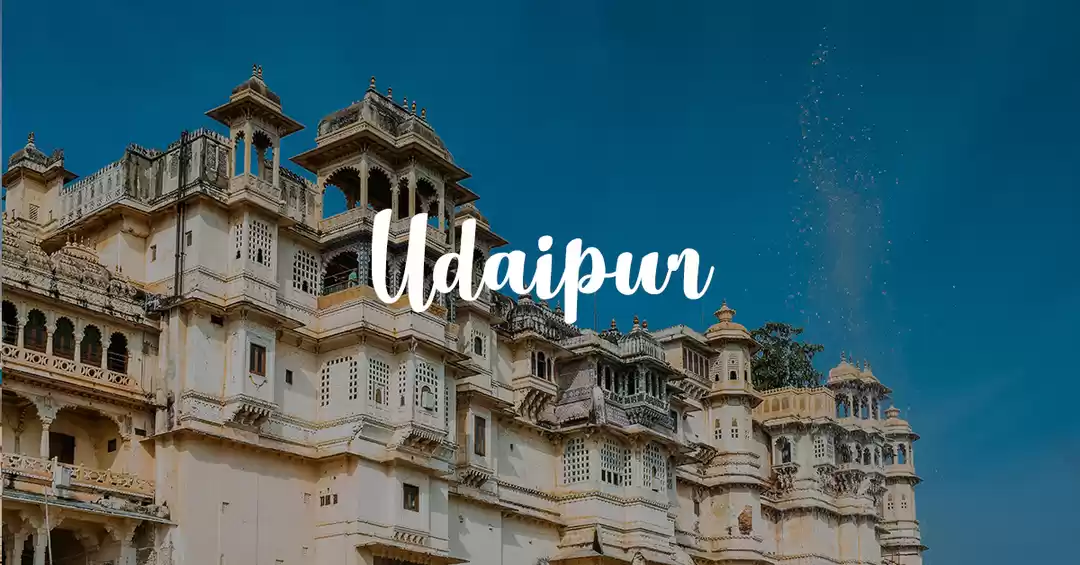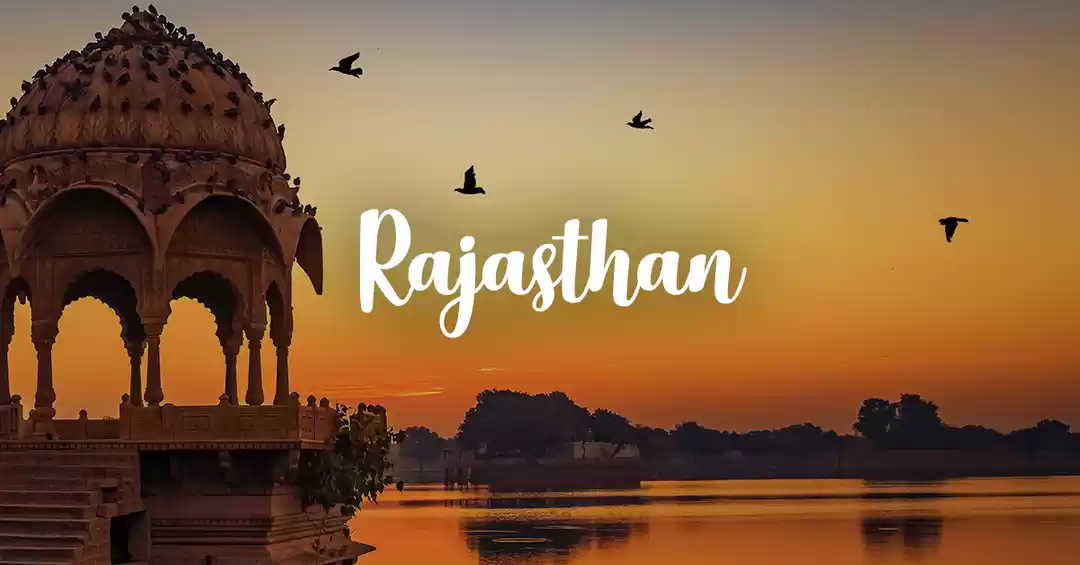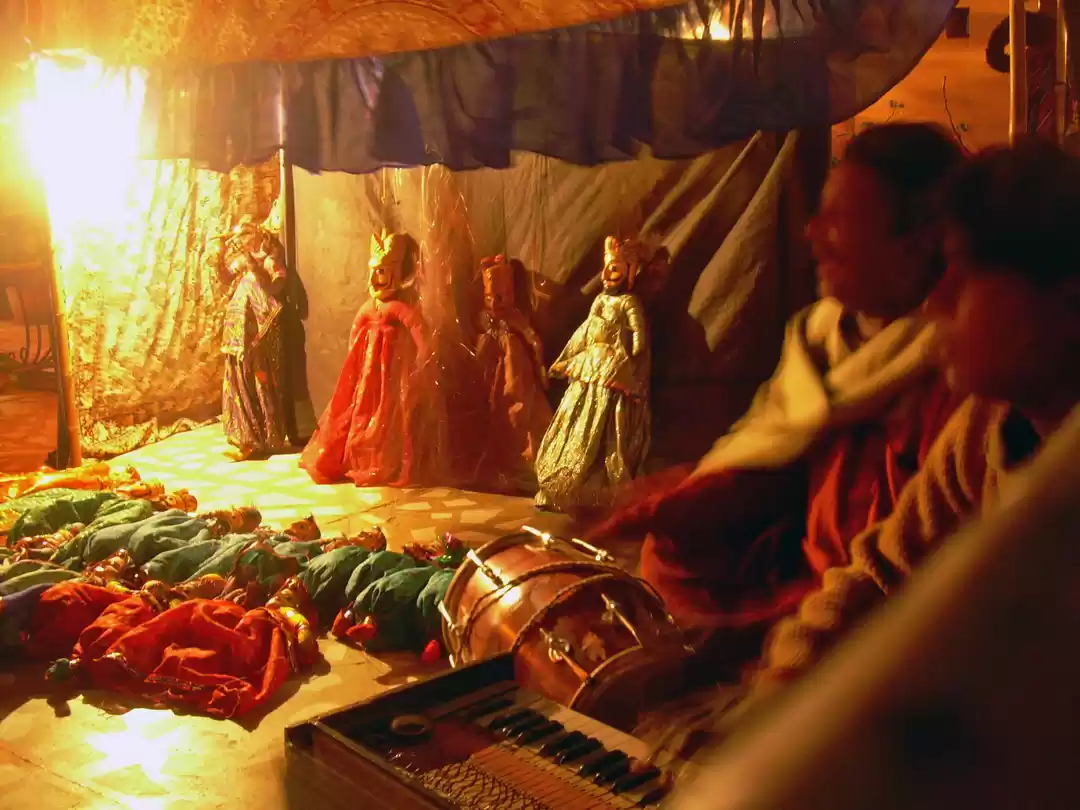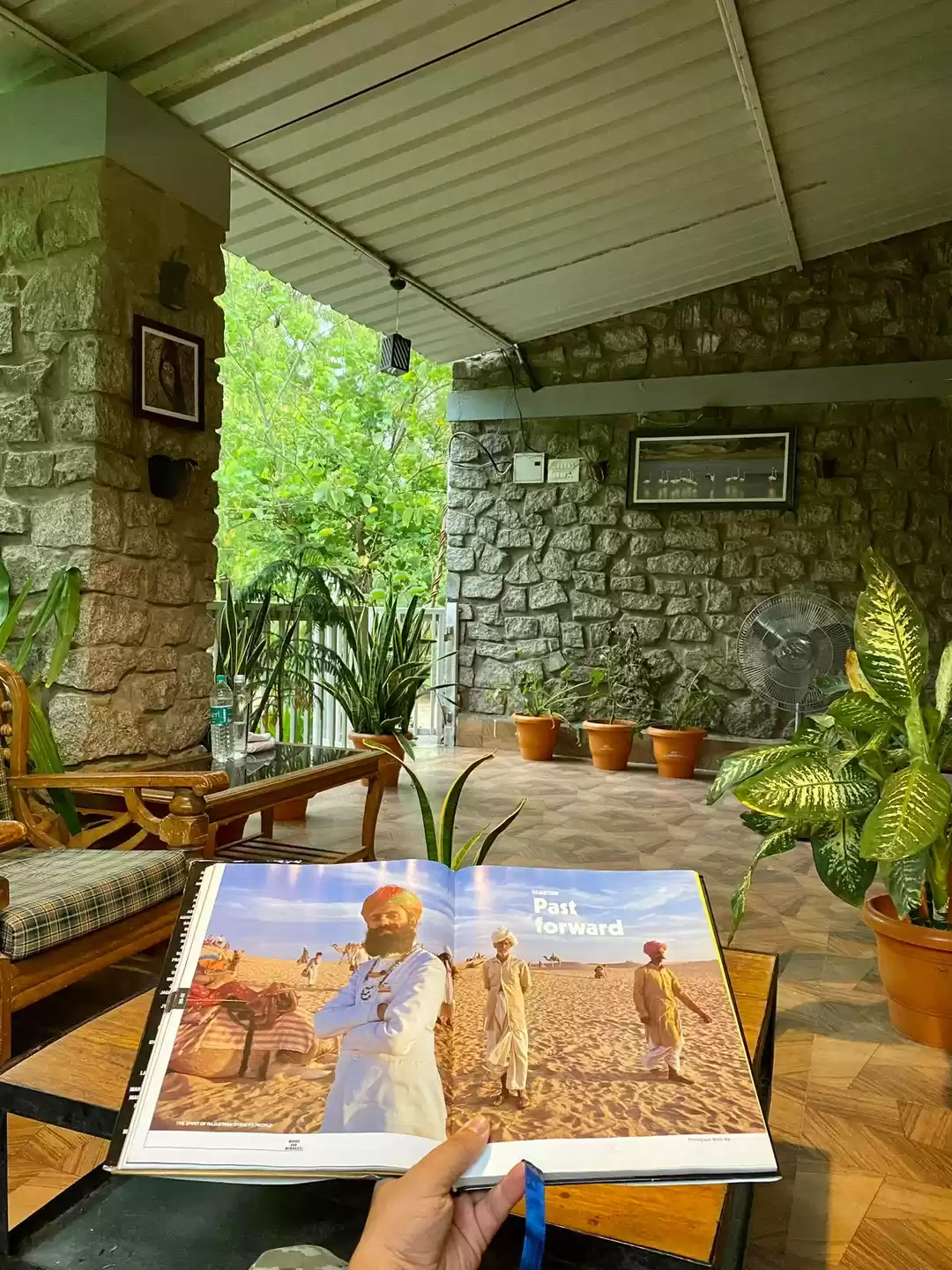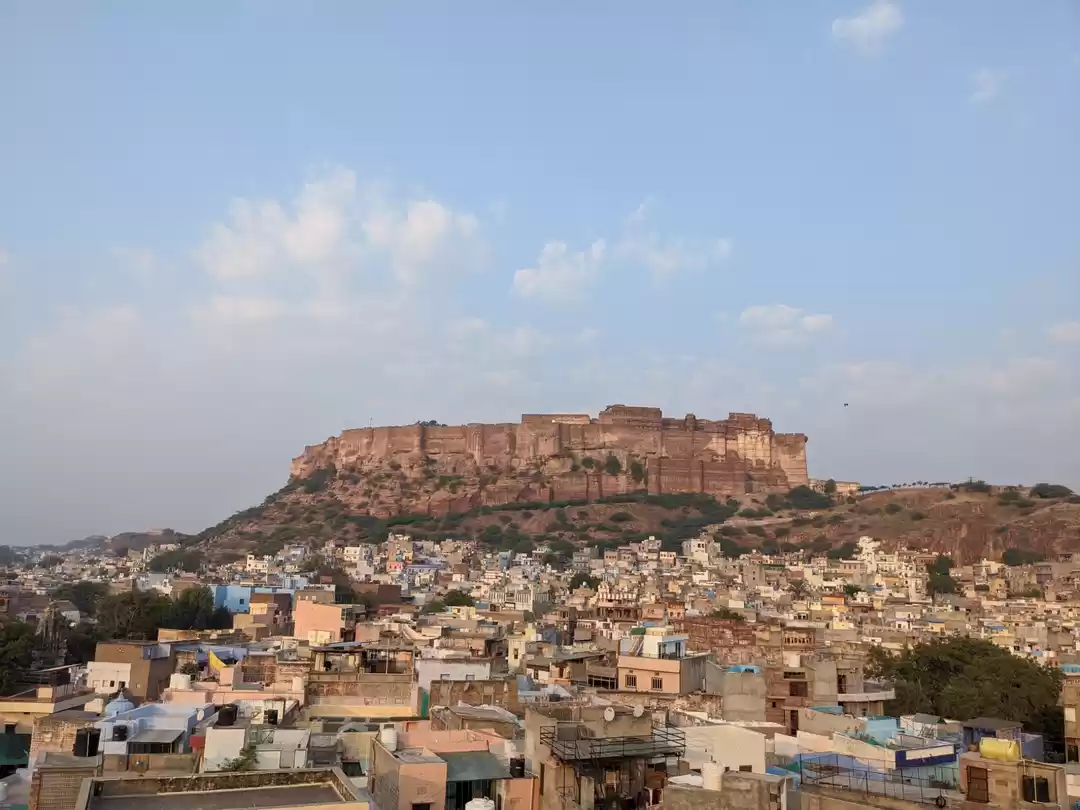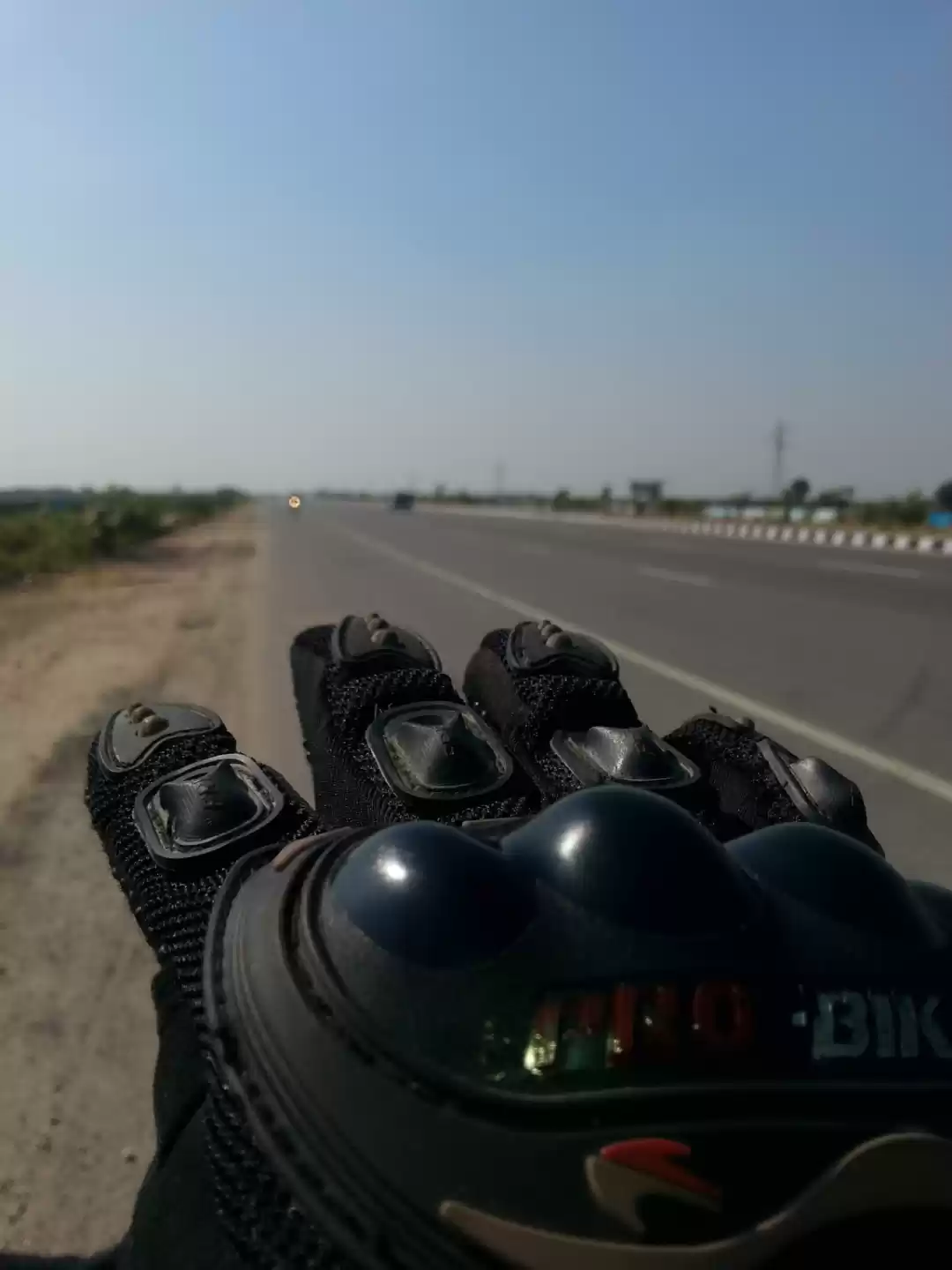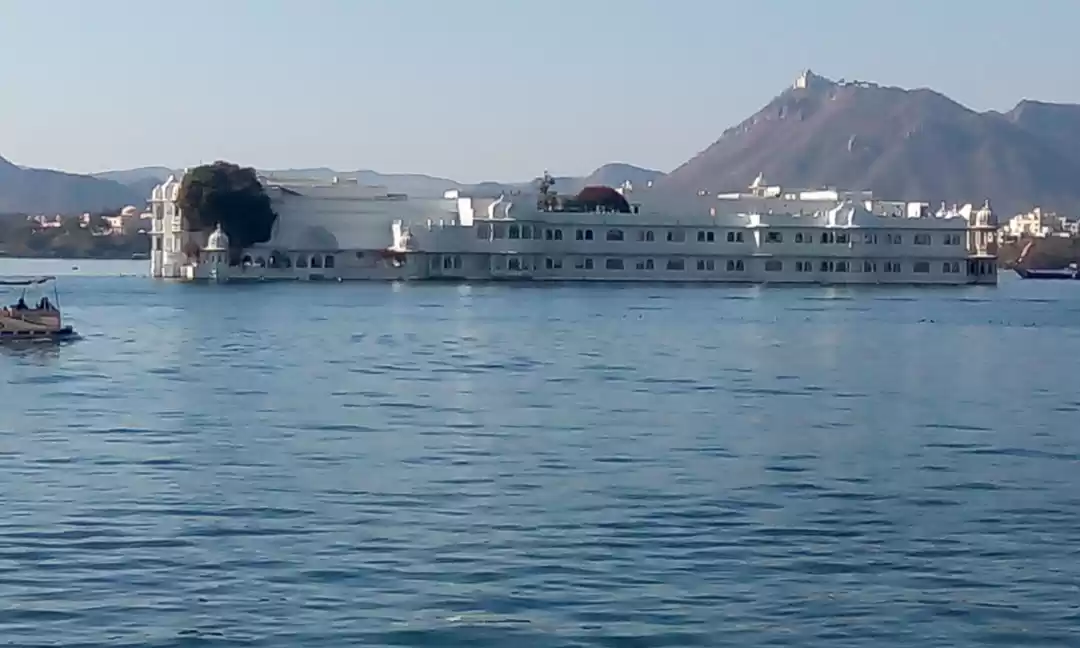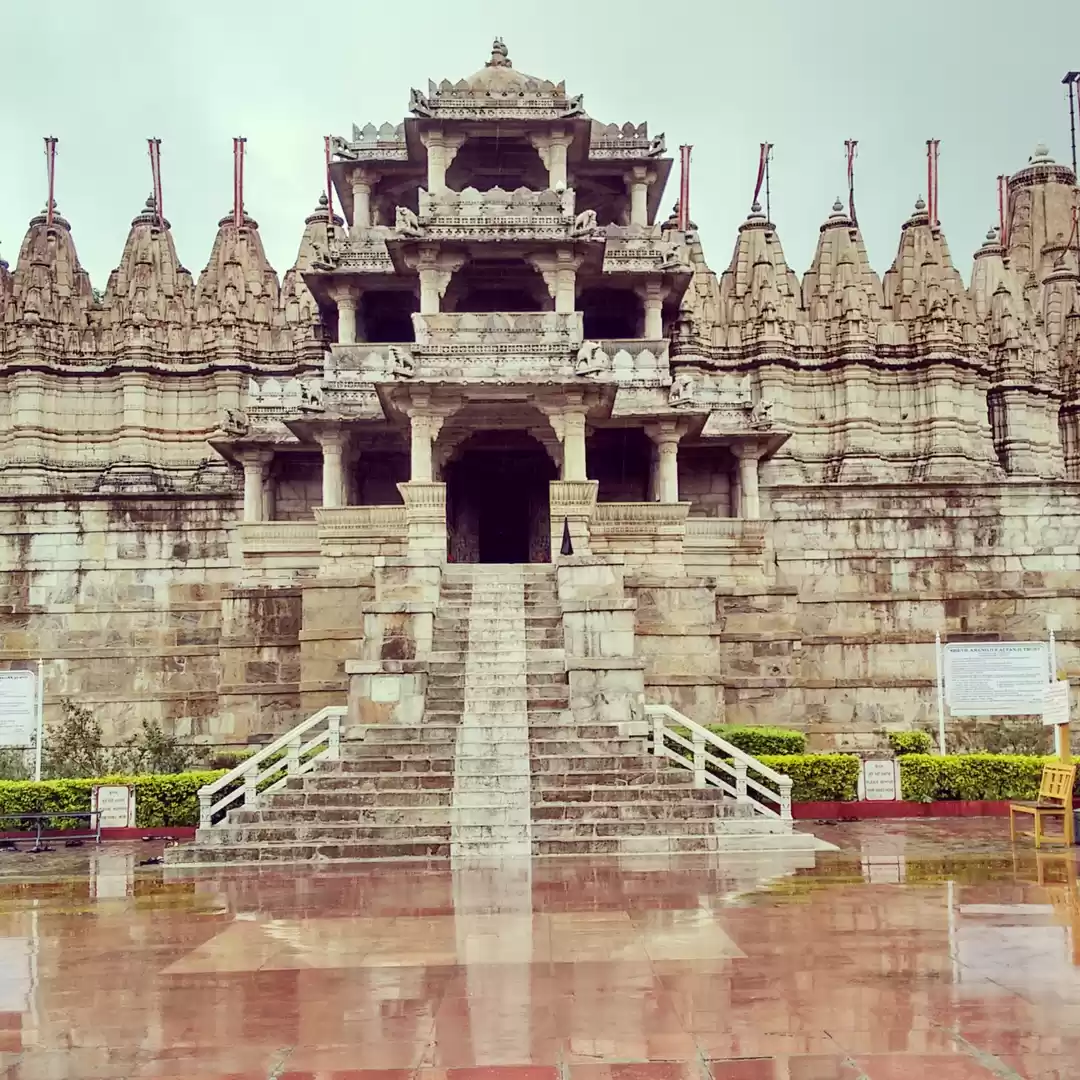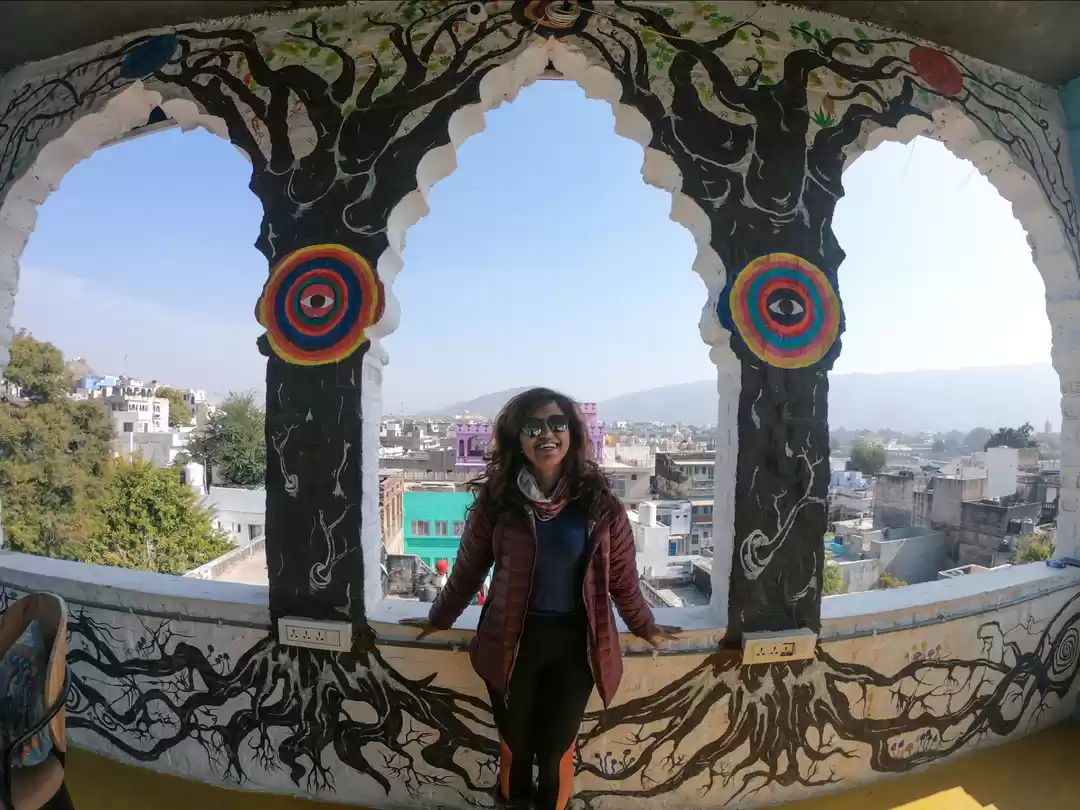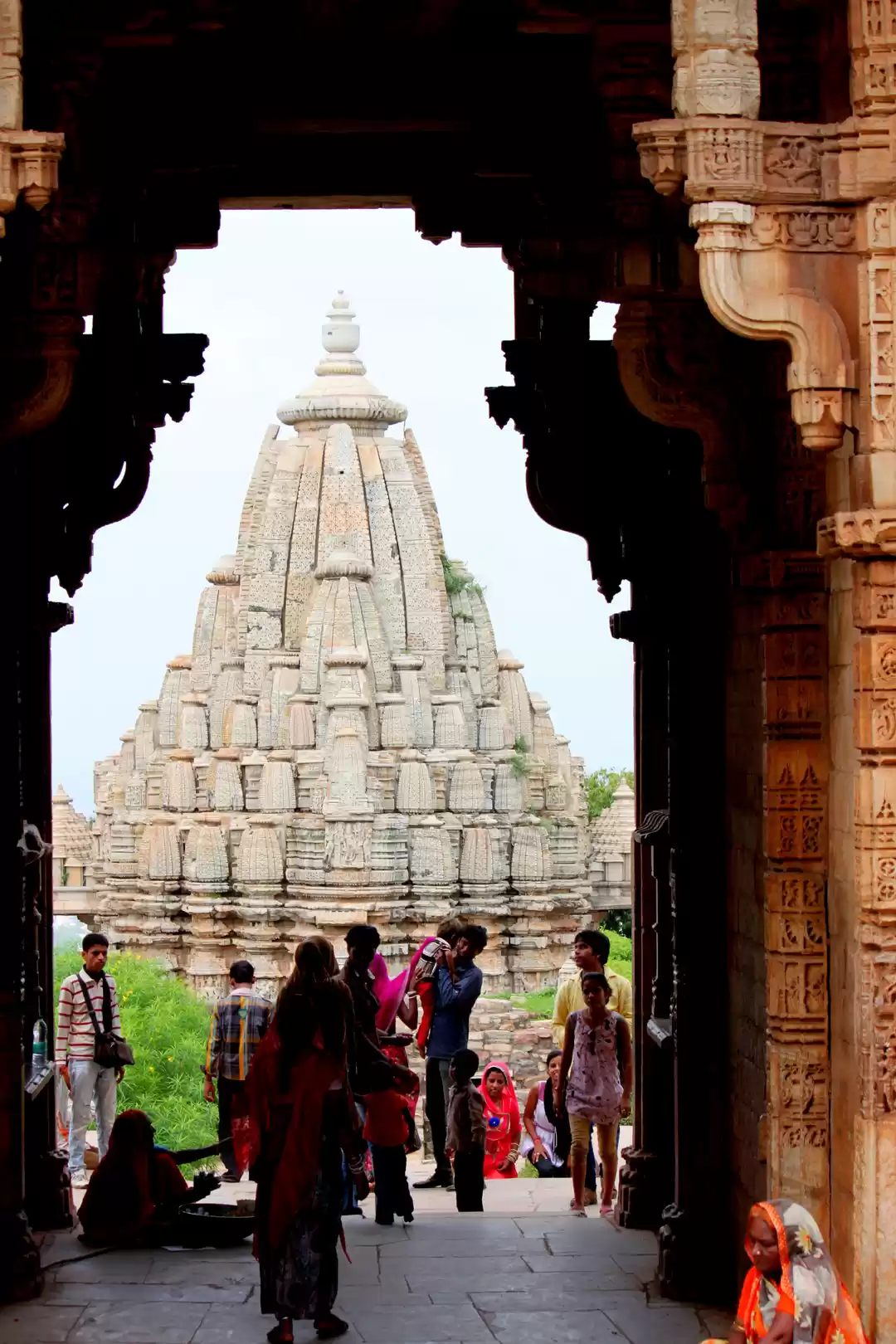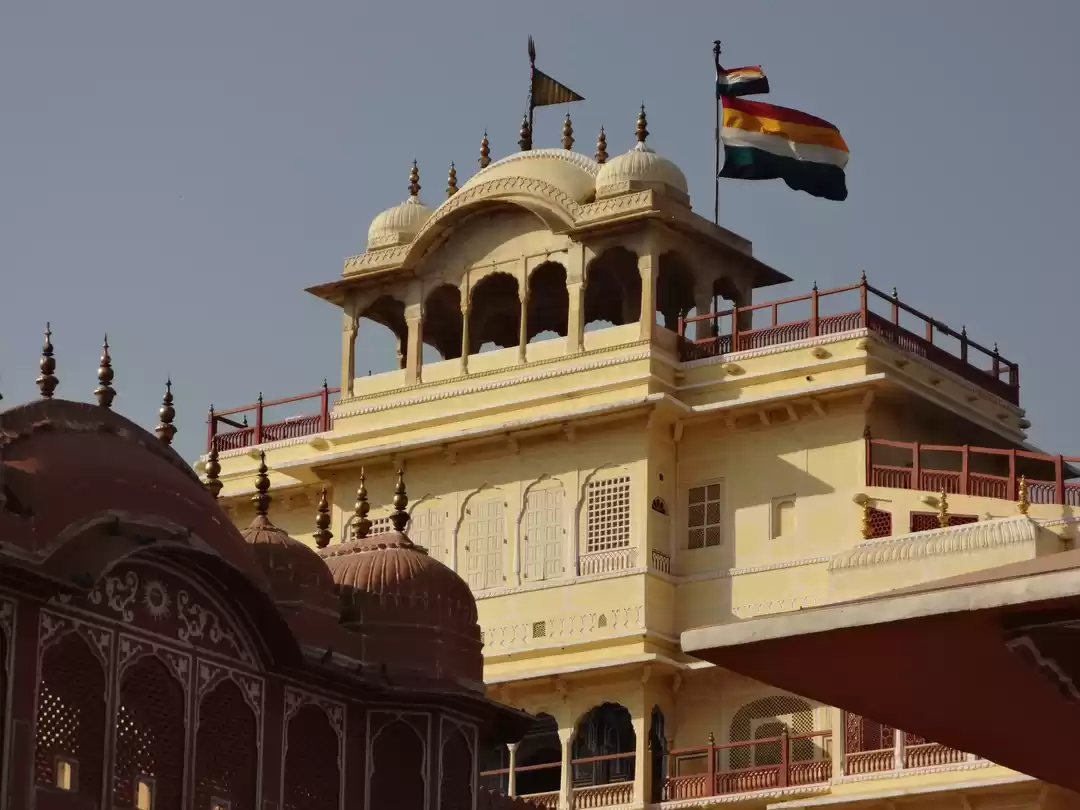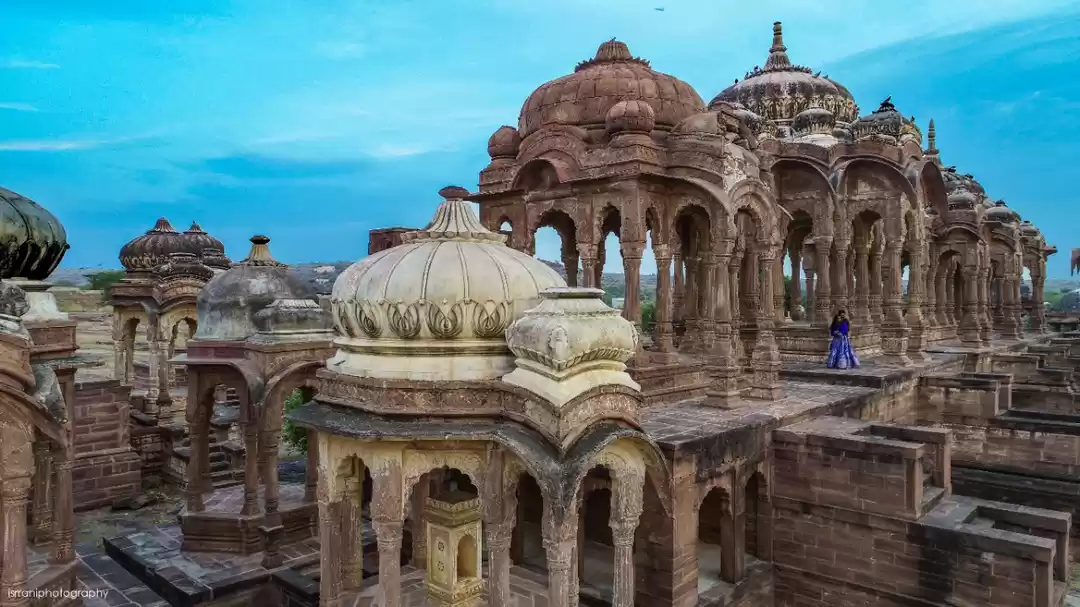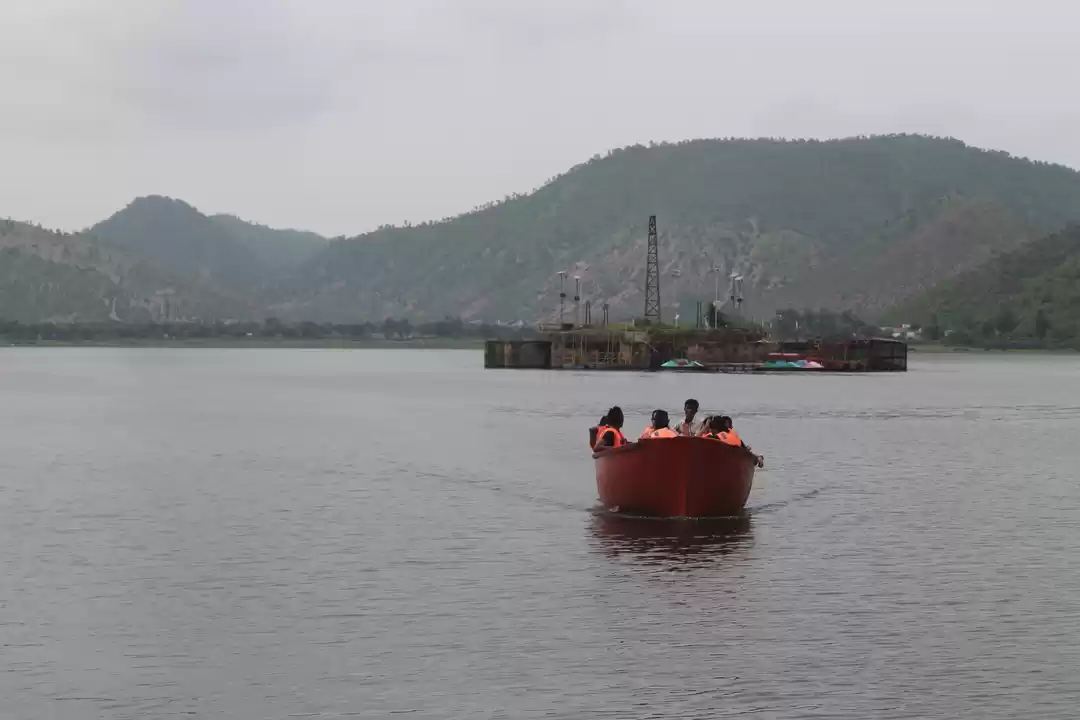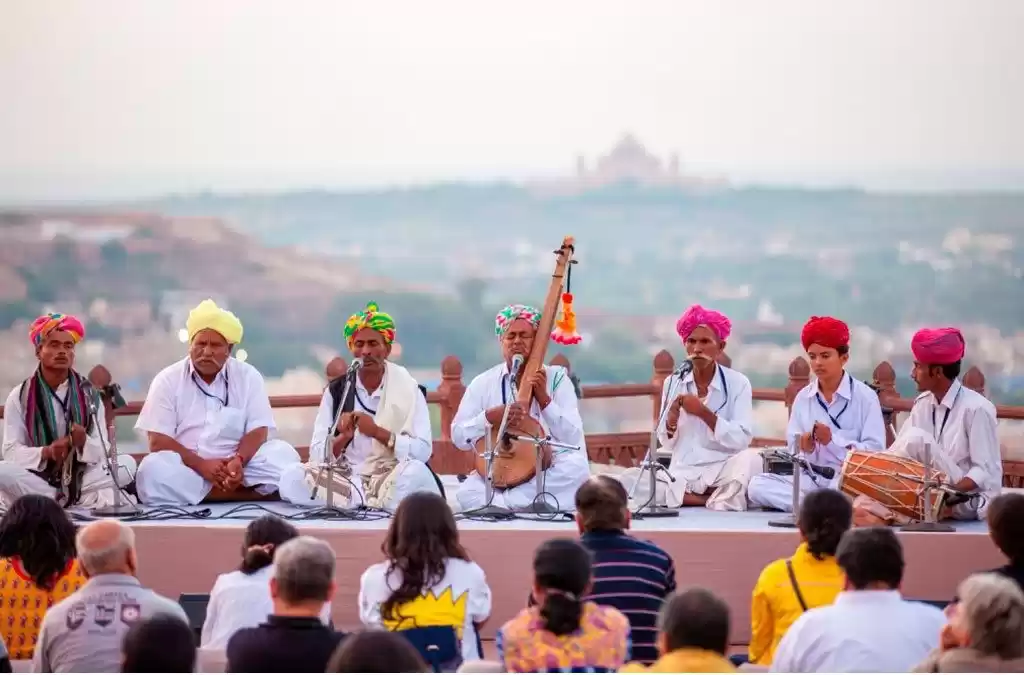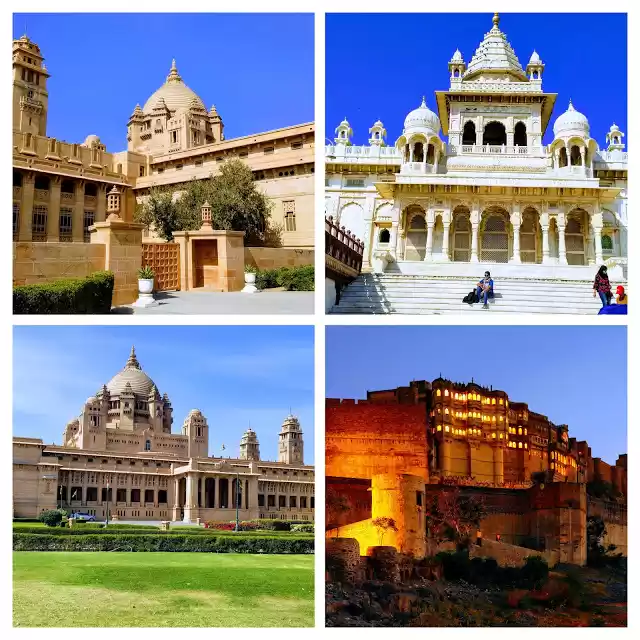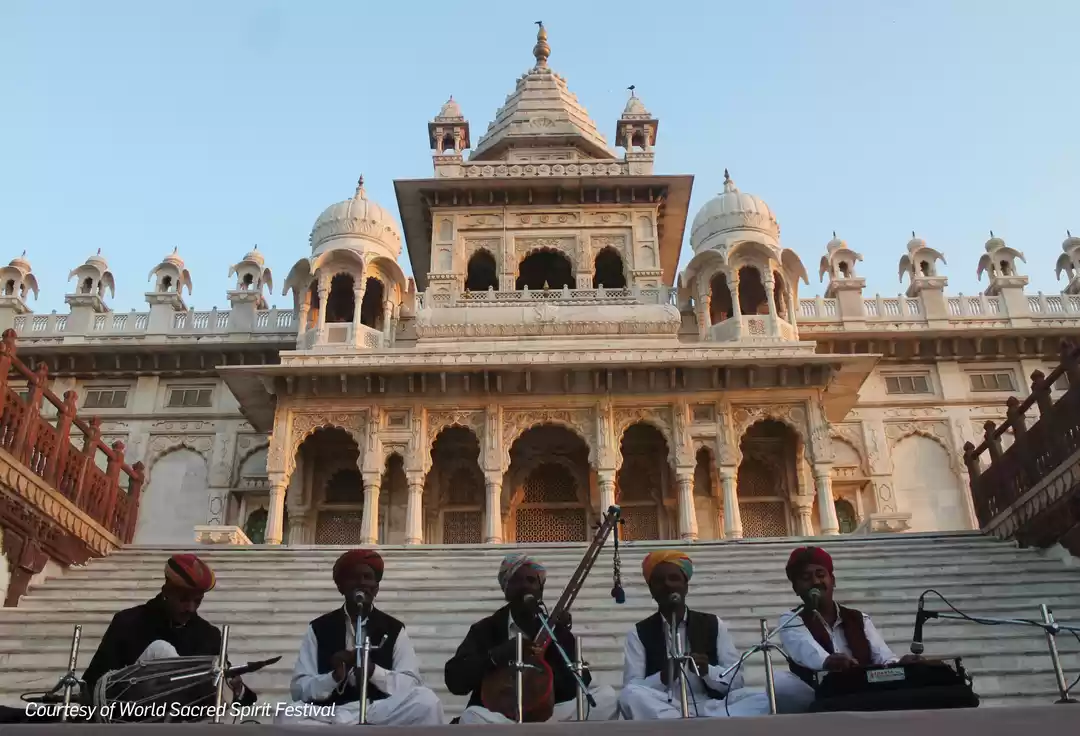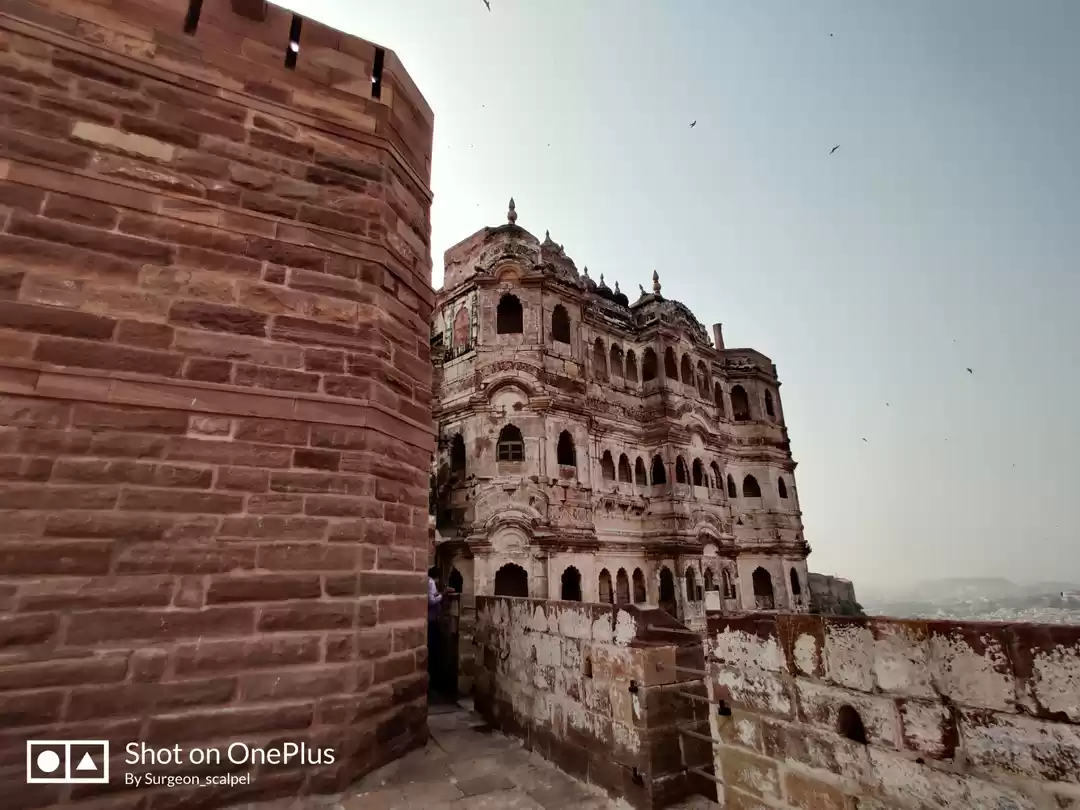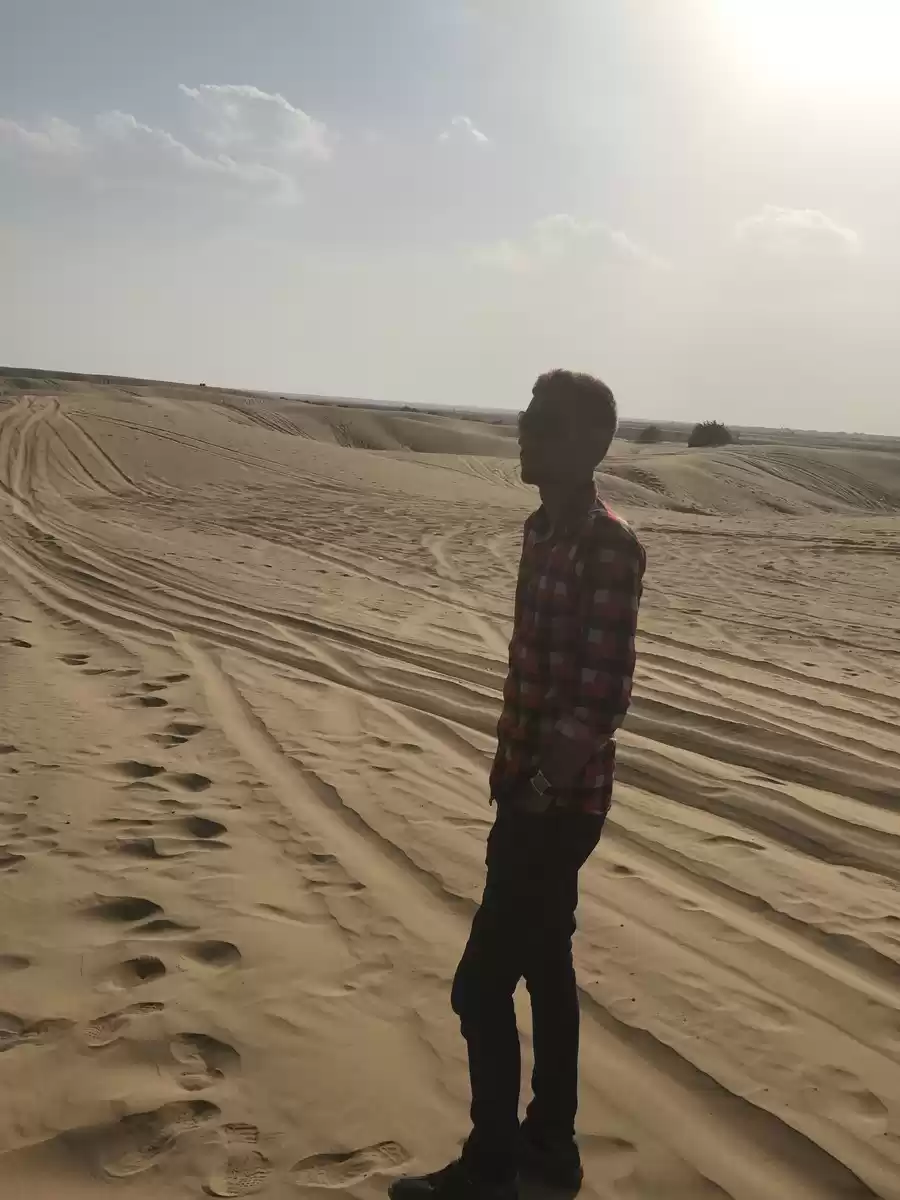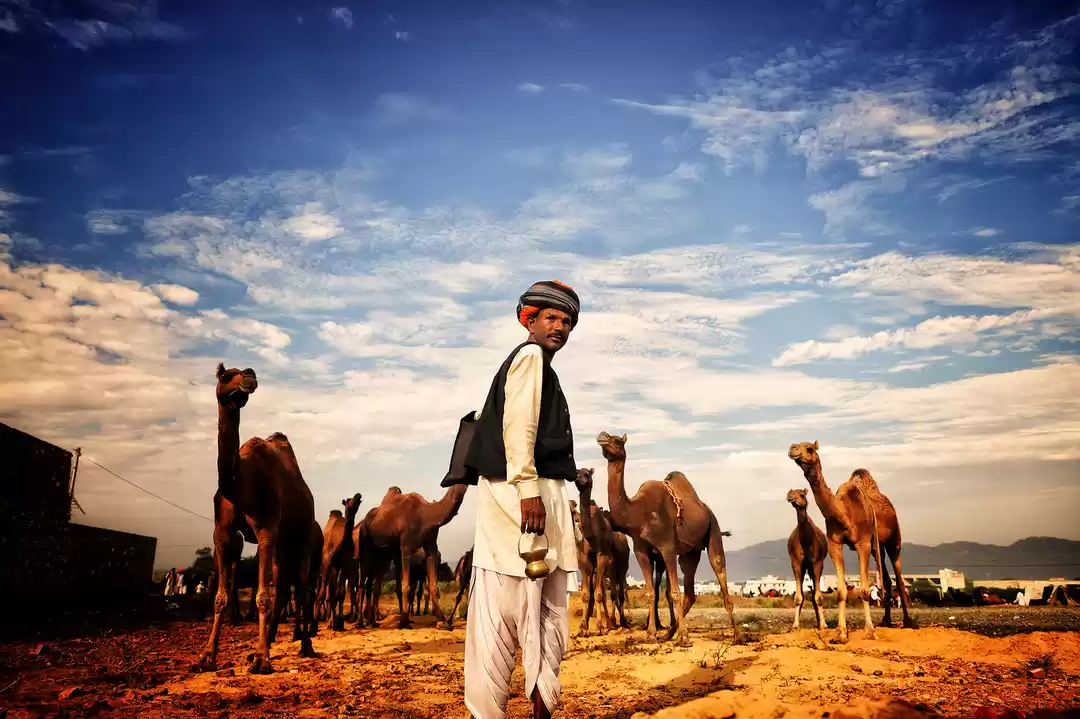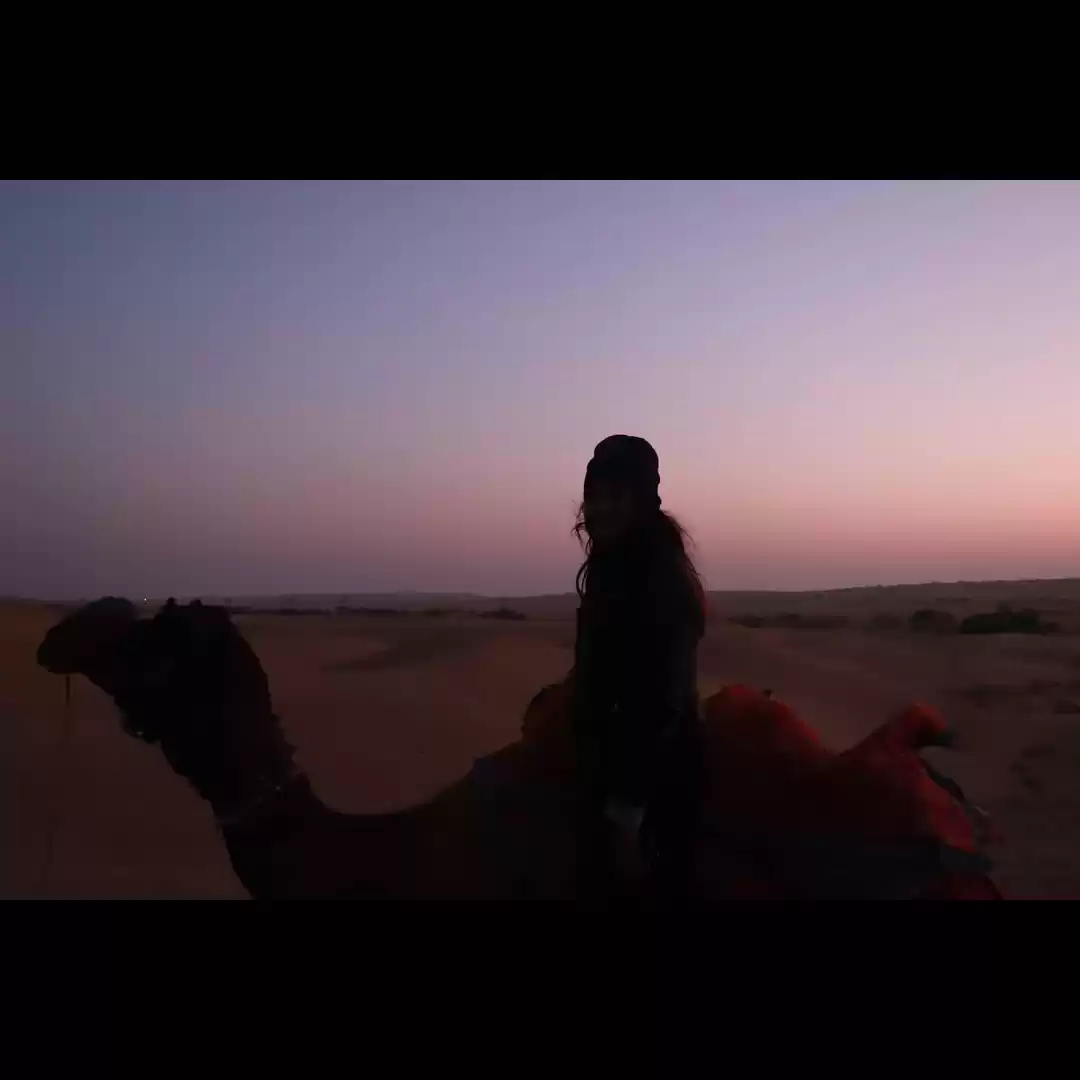
Day 4 - Jaisalmer
We have slept 10 hours at a stretch. At 8:30 we have toast, scrambled eggs and tea on the terrace of the restaurant before launching to discover a city that is waking up. We went out to the street where we crossed narrow alleys full of garbage in which numerous animals roam freely from pigs, goats, chickens, and above all cows.
We stand in what looks like an sweetshop to try several sweets, some karanji with honey and nuts reminiscent of baklava, burfi and badam pak. Thus, almost without realizing it, we arrive at the doors of the so-called golden city, located on the crest of a sandy yellowish rock. It is crowned by a fort whose construction began in the 12th century, and which after several enlargements has 99 imposing bastions on a small hill.
Here we take an unofficial guide who talks about the grand Haveli of Jaisalmer and offers a guided tour throughout the morning. He begins to explain some details about the name of the city, although soon after he tells us that he has to go to cast his vote in a local election.
We are continue to be guided by a friend of his. We continue ascending through doors, all built in a curve, to avoid the onslaught of the elephants of the enemy army. Four doors, Akhaiya Pol, Ganesh Pol, Suraj Pol and Hawa Pol, lead to the main square, where the Rajmahal palace is located, and to its right is the Maharani palace.
We move through alleys full of people. Here what impresses us most is the color of everything that surrounds us, especially the beautiful dresses worn by women. We see vegetable and fruit stands (although they are not as varied as in other countries), the stalls where they sell dyes, which pile in a pyramidal shape. The colors of the facades of the houses complement this spectacular chromatic crucible.
Some of the women also has henna tattoos on their hands and feet, with geometric or floral motifs. This chromatic beauty contrasts negatively with dirt and noise. We wander through the interior of a city, and we see that in many facades there are paintings in which Ganesha along with some inscriptions that we do not understand.
The guide clarifies that this is a perennial memory of a wedding, indicating the names of the couples, the caste to which they belong, and the date of the event. We penetrate ancient doors where hang five chilies, in some havelis, and old houses of merchants.
This city was in silk route that declined with the growing maritime trade and the development of the Bombay port. In construction of the havelis the merchants spared neither efforts nor money, converting them into authentic works of art. In the sandstone of the walls, the stonemasons left many details engraved. The balconies are spectacular for their meticulous work, as are the arches, the doors and some wall paintings.
Most of these prosperous merchants professed the Jain religion. The merchants also built wonderful temples, with a very elaborate sculptural decoration. We visited the Chandraprabhu Jain Temple and Shri Lodravapur Parshvnath Jain Shwetamber Tirth. It reminded me of Ankor Wat because of the number of motifs carved in the stone. We also find many representations of Mahavira sitting in the lotus position, and which closely resembles Buddha.
After leaving the walled enclosure, the guide takes us to Patwon Ki Haveli. Its large size, the carved stone filigree, the decorative richness, and its 60 lattice balconies make it an architectural marvel. We then head to Nathmal Ki Haveli, another interesting place. Two architect brothers took charge of its construction, which was commissioned on one side of the haveli, achieving a similarity between both, as well as a large number of differences.
Finding these differences becomes a challenge and an entertainment for tourists. We then head to Salim Singh Ki Haweli, and a couple of shops where he takes commission. We bought a quilt, although we will regret it right away, since we could have bought it at the end, and so we would not have to transport it during the entire trip. Then we continue to wander until we reach the Rani Ka Mahal but we did not enter and we continue walking around.
To end the morning we take a relaxing, cool and quiet boat ride by the Gadi Sagar Tank. This lake was built by Maharaja Maharwal Gadsi in 1400. More than a lake it is a deposit that collects rainwater to supply later the entire city. The entrance door, Tilon Ki Pol, apparently was built by a famous courtesan.
The story tells that the two pillars of the entrance remembered the legs of the courtesan. So it is open to the imagination what represented the door to the lake. The Maharaja tried to prevent the construction, but she added a small shrine dedicated to Krishna, which the Maharaja never dared to destroy. In its waters, fished swim happily.
After finishing the visit, we went to the terrace of the restaurant, looking for a good wifi to check the internet, and send whatsapp photos. We had a few beers and a thali with rice, dal, some curry, aloo dum, yogurt, salad and chapati. We return to the hotel to rest for a while. At about 5 o'clock in the afternoon we go in an autorickshaw, to the sunset point, a place about two kilometers away.
We pay to enter (later we observe that there are several points where you can pass for free). From where there is a good view of the city is surrounded by tourists. Once the sun set, we walked back to Jaisalmer, observing daily scenes, as well as a kind of election campaign, controlled by policemen who with sticks in hand, were very threatening.
I take a photo, and try to make a video, but I watch as a policeman comes to where I am. So I abort the maneuver, although then the policeman passed by without telling me anything. We return to the hotel, where we showered before going out to dinner at the famous restaurant (recommended in the Rajasthan travel guide. A young lawyer, guides us there.
We can see the golden fortress in all its splendor, illuminated from all sides by numerous spotlights. We took a thali, chicken curry, chapati, water and beer. In the street sounds of drums and deafening music call our attention. It is another of the numerous weddings that we find. The men dance to the sound of the music and the groom in a typical costume and his finery advances on the back of a white horse ornamented for the occasion.
Many women walk behind the farmhouse with costumes made with colored fabrics and silver and gold ornaments all enhancing the figure of the groom. Already dined and after returning to the hotel where we stayed we heard music, artificial fires and a ruckus. Being early we decided to find out where it came from as it would be impossible to sleep with such a noise.
It is not far behind the hotel where we see the one who gets married, at the entrance of what looks like the place of ceremony. It is a large building in which there is a special decoration for the wedding, a pink tent at the entrance with a red carpet on the floor and where we see all the previous troop dancing with the groom.
We stayed for a while and the family members start to take pictures with the groom and once they enter the building they ask us to take pictures with us, which we politely access. The men thank us with a handshake and the women with a thank you. Once the photos are finished, they invite us to see what is a ceremony that apparently lasts for hours since the bride and groom sit down as they wash their feet, throw rice at them, make offerings, take photos with them and with parents.
I must say that they are very hospitable because they insisted so much that we went up to eat something. We went up and saw that they had catering with well-trained waiters who distribute food. The groom's uncle, who was the one who guided us around the buffet, told us that it was a wedding of a high merchant caste.
We are in a roof where the tables near the cornices extend the buffet. The central area is not covered leaving a courtyard in sight where we observe all the decoration and women's fabrics. After trying several things and greatly appreciate such an experience we retired, not without wishing the couple and the family much happiness. We returned walking to the hotel.

Day 5 - Thar Desert
Today we want to wander around on our own, and we have almost decided to go visit in the Thar Desert, to take a camel ride and see the sunset from its dunes. We did not wake up too early, and had breakfast quietly. I eat the aloo paratha, which is much cheaper than the typical continental breakfast for tourists.
At 9 o'clock we arrive at the fort entrance, and we go through part of what we did not see yesterday. In the narrow streets, vendors of chai and fried peanuts coexist with monkeys, cows and dogs. We see hotels and guesthouses, with private homes and local clothing and souvenirs, whose owners insistently trumpet the quality and low price of their products.
We see the figure of some god, a devotee who prays, and another who offers some rose petals. Women chat and cook. Tourists take pictures and children play ball, all in alleys one meter wide. I have to look up a lot to find the sky among so many balconies and windows. It is enough to lose completely in a labyrinth of streets with bazaars and havelis. The Hindu and Jain temples are in every alley we take.
After receiving so many stimuli, we rest in the restaurant of a hotel, where we chat with a couple on honeymoon, and exchange opinions and advice. At noon we went to collect the quilt, which was missing an opening, and put some buttons. After leaving the bedspread at the hotel, we take a rickshaw and go to the agency, where we have to negotiate hard for the visit to the desert.
We decided to return to the hotel since the time of our excursion to the desert is approaching, stopping at a nearby market to buy fruits. We took it to the room and we put it as close to the air conditioner to cool it down. We rested for a while and got off to be picked up by our driver and headed to Sam Sand Dunes. We board in a ramshackle Jeep, in which also travel a couple of Norwegians and Koreans.
From the busy streets of Jaisalmer, we pass through an arid landscape, crossing a lonely road full of sand, scattered bushes and camels that cross in front of us. In the distance, windmills can be seen, which sadly confirms us, that progress has reached all corners of the earth.
The vehicle parks next to some very modest houses, on the outside of which are some people and a dromedary with a single hump. We see that they are adjusting the saddles and the Norwegians and Koreans start to climb. I ask the driver of the jeep and he tells me that we have only hired a walk around the area and watch the sunset.
When he sees my anger, he calls by phone, and he confirms that we will also take the camel ride. So they prepare another animal and we climb them. Climbing the dromedary is not easy as it is always taller no matter if it seated or not. In my case the animal is very nervous, and throws quite disturbing grunts.
They have to hold it, so I can get up, and they tell me to hold on tight to the leather strips on the chair, which scares me even more. The animal first raise its front legs, leaving me in a fairly inclined plane and then raise the rear ones quite abruptly, which made me almost end up on the ground. Seeing my expression of fear, one of the boys tells me that it is a young, untrained animal.
Finally, in a quite rigid position, clinging to the chair as if my life depended on it, we began the journey accompanied by young people. On camels that are linked by ropes we enter the Thar desert. Luckily it is not too hot (they tell us that in summer temperatures of 50 degrees are reached) and slowly I relax, finally getting to enjoy a long walk of an hour and a half.
Explaining the immensity of the desert is not simple because the desert is everything. It is each of the cardinal points. It is the horizon and what is under our feet. It can also be the despair of being trapped in an ocean of sand that has no end, or it can be calm and tranquility based on its absolute silence. The shadow of the camel is getting longer and that gives us the hint that the sunset is nearing.
At the edge of the sunset we reach a dune, where there are several tents (the other couples will stay for the night here) and we watch the sunset drinking tea. We stopped a while to take pictures until the wind began to rise and clouds began to form before us that approached at high speed as if we were in the movie.
The sight is worth admiring, with the sunset on the one hand and a sandstorm on the other. I see the driver lying on the sand facing the storm, mostly calm. The driver decided that we had already been enough when he finished talking on the phone and we got out of there. We arrived just as the folk group began to play.
We sat in a kind of lounge chairs and they put some salted peanuts and they took note of the drinks (kingfisher of course). While we were enjoying the music with a dancer wearing the typical clothes of the area, we started to go inside to have dinner where they served us rice, dal, butter chicken, kair sangri sabzi and a kind of rice with milk. After dinner we warmed up around the bonfire between chats and songs.
We know nothing of the desert, of the night, or of the day. We cannot orient ourselves, we cannot walk in the sand, we cannot recover after so many hours on camels. But there we are, fascinated with that infinity of stars that we see with only a slight rise of the head. Just thinking about the history of the sand that slips between our fingers gives us goosebumps.
Before going to sleep, we ask for a taxi for the next day early, because we have to catch a train at 6 in the morning. And, as in most adventure films, the romantic part comes. Snuggled up in our beds, with the fire going out, in absolute silence, an impressive blanket of stars spread over our heads. We were lucky that these dates coincided with a shower of stars, so we could ask for more than one wish!
And without being able to separate our sight of the sky we went falling asleep on the sand covered with blankets and shooting stars. Throughout the night we woke up to go back to sleep looking at that unpolluted and silent sky. We need to corroborate that we were indeed there, in the middle of those dunes, somewhere in the desert.

Day 6 - Jodhpur
It's still dark when one of the employees has to wake up the driver who sleeps in a nearby tent. Our driver insists that we wait a bit as he wants to show us something. We wait for a man from the village who delivers opium and sugar, take it and then in the car show us a piece and tell us it was good for the stomach. The driver offers us and along the way explains that in the region fathers dissolve opium in milk so that their children sleep well in the night and and they can work all day.
We return in the Jeep through a series of sand tracks, while crossing several fawns and a fox, until we take the paved road where there is enough traffic. It is still dark and the use of long and short lights, leaves much to be desired. The first rays of light arrives as the dawn was appearing there in front of us. We had no other stimulus than nature and its magnificent simplicity. The times in the desert are marked by the sun.
When we have a few kilometers to reach Jaisalmer, a police control keeps our driver for more than half an hour. In the end he returns laughing, telling us that he had been released without paying to the police, which he says is very usual to avoid problems. We reach the station. I give him a tip for making him get up so early, and he gives us a bottle of water. At the same time he tells us to go to the VIP waiting room, to protect ourselves from the intense cold of dawn in the desert.
We follow his advice, but when we go to the room, we see that it is full of people sleeping. So we go outside again, and we put on all the clothes we have (which is not much), especially when we are informed that the train will leave late. The people who have slept in the surroundings begin to get up, and they walk with thick blankets to protect themselves from the cold.
More travelers start arriving and I drink hot chai in a stall to warm up. A group of soldiers try to talk to me and I walk away with a smile. At 7.30 we went out in the sleeper class, with the tickets bought through internet. We settled in a bunk comfortably lying down, in a surprisingly empty train. We feel cold because the windows do not close well.
We eat some cookies and energetic breakfast bars, while we observe the landscape through the thick bars that protect the windows. Seated beside me is a fellow who lives in Jodhpur. As the Rajasthani tradition commands, his name is tattooed on his forearm. He is friendly, sarcastic and frank. We join over tobacco.
He saw me smoking sitting on the steps of the open door of the moving train car, and now he invites us to his corner at the beginning of the coach, the final point before the locomotive. We got together there. He opens the door for us.
The train makes innumerable stops, some of which are quite long, which allows us to see each of the stations, with a swarm of people. We see sellers of all kinds of food, travelers with huge bales under their backs, and women with children who do not know very well where they go. In one of them, I go down to buy some pakoras, freshly made.
A nice family that travels to our side offers us a cake, which I take with a smile and gratitude. The ticket checker throws several people out of our coach because they have a lower class ticket.
At 2 in the afternoon we arrived at Jodhpur station and quickly took a rickshaw that take us to our guesthouse, in the middle of a horrific traffic. The hotel is in the historic center, in a narrow alley that we must access on foot. The room is not bad, but the sheets have not changed. Soon the manager appear apologizing, and scold the employee.
We went up to the restaurant, a terrace with amazing views of the fort that dominates the city, and we had a beer, before going for a walk around. We are close to the Clock Tower and the so-called spice bazaar, where hundreds of stores offer spices and tea of all kinds. A young merchant teaches us to differentiate pure saffron from the substitute, although his initial friendly tone decrease as he realized that we were not going to buy anything.
We wandered for a couple of hours there, perceiving the aroma of spices and the variegated panorama of the narrow alleys, until we decided to go to the hotel for an early dinner on the charming terrace. We enjoy the views of the illuminated fort away from the madding crowd. Here we meet a couple of young people, with whom we will talk for a long time before going to sleep, while the muezzin from a nearby mosque calls faithful Muslims to prayer.
Today Ramadan ends and they are having a party.
Day 7 - Jodhpur
We have rested quite well, and at 8 in the morning we have breakfast with coffee and toast on the terrace. Although there are hardly any people, the service is desperately slow. At 9 o'clock, we began the winding climb to the Mehrangarh fort, one of the largest in the country. Its construction began in the mid-fifteenth century by order of Maharaja Rao Jodha and is surrounded by imposing and thick walls.
As in almost all the monuments in India, in addition to the entry ticket, we have to pay for camera, although the normal thing is to use mobile cameras. It has 3 imposing entrance doors, each one dedicated to commemorate a victory. The Jaya Pol is on the armies of Jaipur and Bikaner, the Fateh Pol on the Mughals. The last door called Laha Pol has the traces of 15 hands as a souvenir of the sati of the widows of Maharaja Man Singh.
We reach Chokelao Bagh and take some pictures. Inside the museum is the most important collection of palanquins from all over Rajasthan. We also see the Moti Mahal, Sukh Mahal, and Phool Mahal exquisitely decorated with carved panels, barred windows and colored glass. We see inside elephant chairs, royal costumes, musical instruments, weapons, furniture, and a collection of cots are displayed in a beautiful room.
For almost three hours we tour the enclosure, with a free audio guide through huge doors protected by sharp irons, spacious patios and sumptuous rooms, full of miniatures, musical instruments, costumes and all kinds of furniture. In the last part of the fort there is a temple and just before there is a collection of cannons in which stands out a Chinese one that I think was a gift.
It also has an impressive view over the so-called blue city of Jodhpur named for the blue tone that many of their houses present. The color was adopted because it was said to scare away heat and mosquitoes. Currently the new buildings are still painted blue for tourist reasons. Jodhpur is the second city of Rajasthan and is located on the edge of the Thar Desert.
At the exit, we are approached by several rickshaw drivers offering their services. We agreed with one of them to take us to a nearby mausoleum and to the Royal Palace, located on the other side of the city. First we go to the Jaswant Thada, built by Sardar Singh in 1899 in memory of his father, Maharaja Jaswant Singh II, considered the best ruler of Jodhpur.
It is built with finely carved and polished sheets of the same white marble of the Taj Mahal and is known as the Taj Mahal of Marwar. The marbles emit a warm light when the sun's rays alight on its surface. It's really beautiful. In the garden there are several cenotaphs and a monument to a peacock that flew on a funeral pyre.
We took some photos of Kirat Singh Soda's chhatri who was a soldier who died at the same point defending the fort. Then we moved to the Umaid Bhawan Palace, one of the largest private residences in the world, named after Maharaja Umaid Singh.
It has 347 rooms and is divided into three parts with the luxurious Taj Palace Hotel, the residence of the former royal family, and a museum about the history of it, which is what is open to the public. We also visited a gallery, which shows the cars belonging to the royal family. The visit as a whole is not bad, but it is dispensable, and I only recommend it if you have time to spare.
We return to the surroundings of the Ghanta Ghar and we pass to reserve a table at the nearby restaurant, with excellent reviews on the Lonely Planet. After crossing again several adjacent streets, we return immediately to the hotel looking for a safe haven. After resting a couple of hours in the room and preparing the bags, we go to the restaurant, where we have a splendid dinner on a terrace with views of the fort.
It consists of dal, curd, shahi paneer, salad, rice, gulab jamun, papad, and chapati. For accompaniment we ask for aloo pakora and beer. We return to the hotel at 10 o'clock at night, and something catches my attention. The streets are almost empty, and there are almost more cows than people transiting through them.






